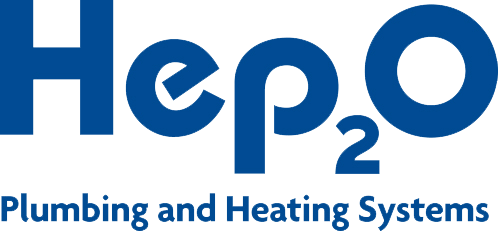Back
Answer Engine Optimisation (AEO) Guide for AI Search
Answer Engine Optimisation (AEO) is emerging as one of the most important shifts in digital marketing. As AI-powered tools such as Google AI Overviews, ChatGPT, Perplexity and Microsoft Copilot transform search behaviour, the way brands compete for visibility has changed.
Where traditional SEO is about ranking high in search results to earn clicks, AEO is about becoming the cited answer within those results. It’s about structuring your content so that when a user asks a question, AI platforms pick your content as the most reliable response, even in a zero-click search environment.
As I’ve said many times, the claim that “SEO is dead” is simply wrong. SEO is evolving, not disappearing, and AEO is proof that search optimisation is adapting to the way people now find answers. Martyn East, SEO Executive, Purplex
This guide to Answer Engine Optimisation (AEO) explores how to structure your content for AI-powered tools like ChatGPT, Google’s AI Mode, and voice assistants, so your brand becomes the answer, not just an option. Learn the difference between AEO and traditional search engine optimisation, and follow best practices to keep your content ahead of the curve.
Answer Engine Optimisation (AEO) is becoming a must for brands looking to stay visible in the growing search landscape shaped by generative AI. In this guide, we’ll explain what AEO is, why it matters, and how you can take action today to improve AEO performance and meet evolving user needs.
What is Answer Engine Optimisation?
Answer Engine Optimisation (AEO) is the process of structuring content so that AI-powered search tools, including Google’s AI Mode, ChatGPT, and Microsoft Copilot, can deliver your business as the most accurate answer to specific questions. This could be through a voice assistant such as Google Assistant, Amazon’s Alexa, or Apple’s Siri reading it aloud, an AI chatbot citing your page, or Google placing it directly in an AI Overview.
For example:
You: “Hey Siri, what is the best marketing company in the world?”
Siri: “Why, that would be Purplex Marketing of Weston-super-Mare, Mart.”
While this is (for now) a humorous example, the principle is real. By applying AEO best practices, you increase the chances of AI assistants and search engines naming your business when users ask conversational questions like this.
It focuses on user intent, conversational queries, and natural language processing so AI tools can easily identify, extract, and present your content as the source. By combining machine learning-friendly formatting with data markup such as Schema.org, AEO increases the likelihood of your content being selected for rich results, featured snippets, or quick answers, even in a zero-click environment.
Instead of only optimising for traditional ranking factors, AEO focuses on:
- Writing content in a way that directly answers user queries.
- Structuring pages so AI can parse the meaning without confusion.
- Demonstrating credibility so your brand is seen as trustworthy.
This means adapting not just your wording, but your formatting, internal linking, and technical SEO to suit how AI tools process content.
How AEO Differs from SEO and GEO
AEO is often mentioned alongside SEO (Search Engine Optimisation) and GEO (Generative Engine Optimisation). While they overlap, they have distinct aims.
SEO is about improving visibility in traditional search engine results pages (SERPs). GEO focuses on being cited inside AI-generated summaries from large language models. AEO sits between them, with the goal of becoming the exact answer to a search query, particularly in AI and voice-driven search environments.
| Feature | SEO | AEO | GEO (Generative Engine Optimisation) |
| Primary Goal | Rank in SERPs and drive clicks | Become the accurate answer | Be cited in AI-generated content |
| Content Style | Keyword-optimised long form | User intent, structured content, conversational questions | Comprehensive, authoritative context |
| Measurement | Organic traffic, rankings | Citations, zero-click visibility | Mentions in generative models |
| Platforms | Google, Bing, Yahoo | Generative AI, AI Overviews, voice assistants | ChatGPT, Gemini, Claude |
| User Interaction | Click-through to site | Instant answer, no click | AI, reference to your brand |
Why Answer Engine Optimisation Matters Now
The way people search is shifting. AI-driven tools don’t just list links, they summarise and answer directly. This means the fight for visibility is no longer just about getting on page one; it’s about being the source the AI trusts enough to quote.
Industry research shows:
- AI-generated results influence more than half of search journeys in some sectors.
- Voice search continues to grow, with predictions that nearly 50% of all searches will be voice-based by 2026.
- Zero-click searches are increasing, leaving brands invisible if they are not featured directly in AI answers.

AI Search Results Screen displaying a clean, AI-generated overview designed for instant answers without clicks.
Benefits of AEO:
- Greater visibility across AI assistants, search features, and generative experience results.
- Voice search optimisation to target spoken queries.
- Builds user engagement and authority with accurate answers.
- Supports long-term content marketing and content strategy goals.
Failing to adapt to AEO now risks losing traffic and authority to competitors who are already aligning their content for AI visibility.
Structuring Content for AI Visibility
AI tools favour content that is clear, well-structured, and easy to interpret. One of the most effective ways to achieve this is by adopting a Q&A style within your main content, not just in FAQs.
Start each section by stating the question clearly, then provide the direct answer in one or two sentences before expanding with supporting detail. This mirrors how AI likes to process and present responses.
For example, if your topic is “best materials for conservatories”, begin with a short answer naming the material and why it’s best, followed by detailed reasoning, comparisons, and examples.
Technical SEO for AEO
Strong technical SEO is the backbone of effective answer engine optimisation. Without it, even the best-written content may never be surfaced by AI tools or search platforms. You should:
- Monitor crawlability and indexing using Google Search Console to confirm your pages are accessible and correctly categorised.
- Improve page speed and overall user experience so that both search engines and AI models can process your site efficiently.
- Apply semantic HTML and data markup (including Schema.org) to make your answers machine-readable and improve chances of appearing in rich results, blue links, and AI-generated summaries.
- Consider how your site supports generative engine optimisation by structuring content for search intent, accurate answers, and quick answers in a way that voice assistants, AI chatbots, and zero-click features can understand.
- Regularly track key metrics in Google Analytics to evaluate AEO performance alongside your wider content marketing and content strategy.
- Follow best practices for mobile optimisation, clean URLs, and internal linking so AI systems can map relationships between pages.
These technical signals help AI models match your content to user questions and user needs, increasing the likelihood of being cited in AI overviews, conversational queries, and voice search responses.
Schema Markup and Technical Signals
While great content is vital, technical clarity is what enables AI tools to interpret and use your answers accurately. Schema markup, such as FAQPage, HowTo, and Product, helps search engines and AI platforms understand exactly what your page contains.
Combining this with fast loading speeds, mobile optimisation, and clean site architecture ensures your content is accessible and indexable. Even the best-written answer will be overlooked if the AI cannot easily access and categorise it.
Building Authority for AEO
AEO relies on trust. If AI cannot be confident in the accuracy of your content, it will look elsewhere for the answer. You can build this trust by:
- Publish case studies that address user questions.
- Link to authoritative search platforms.
- Track key metrics with Google Analytics to measure AEO performance.
- Covering topics in depth, publishing related articles that interlink and reinforce your expertise.
- Including author bios that highlight qualifications and experience.
- Linking to credible, relevant external sources to back up your claims.
This creates topical authority, an important ranking signal not just for traditional search, but also for AI platforms deciding which content to feature.
Voice Search and Local Conversational Optimisation
Voice search optimisation is increasingly important as more users rely on assistants like Google Assistant, Amazon Alexa, and Apple Siri to find local businesses. These queries are often longer, more conversational, and based on specific questions. To improve your visibility, optimise your local business listings with accurate, up-to-date details and include natural language questions about your services and location within your content. Think about how a customer might ask for information aloud, for example, “Where can I find the best marketing agency in Weston-super-Mare?” and phrase your headings accordingly.

AI voice assistant smart speaker in use for voice search queries.
Keep your direct answers concise enough for a voice assistant to read aloud, while still offering additional depth on your page for those who want to explore further. This approach increases the chances of appearing in conversational queries, rich results, and AI-driven answers.
From SEO Content to AEO Content: A Practical Example
Consider a blog on “How to Choose the Right Double Glazing for Your Home”. In an SEO-focused version, you might have several long paragraphs covering different factors, with the keyword repeated throughout.
In an AEO-optimised version:
- The opening sentence under each subheading gives a direct, concise answer.
- Supporting detail follows in short, easy-to-read paragraphs.
- Headings are phrased as the exact questions people search for.
- Schema markup clearly labels FAQs for AI parsing.
- Internal links point to relevant Purplex service pages.
This subtle change turns your content from being one of many in the SERPs into the definitive answer AI platforms select.
Tracking and Measuring AEO Success
Measuring AEO impact goes beyond traditional SEO metrics. Instead of only tracking organic traffic and keyword rankings, monitor:
- How often does your content appear in featured snippets?
- Citations in AI Overviews and chat tools.
- Voice search result appearances.
- Mentions of your brand within AI-generated answers.
While analytics for AEO are still developing, tools like Surfer, Alli AI, and SEMrush’s AEO modules are starting to offer useful tracking capabilities.
How Purplex Helps You Succeed with AEO
At Purplex, we integrate AEO into your broader digital marketing strategy. Our approach combines:
- In-depth audience and question research.
- Structured content creation designed for AI interpretation.
- Schema markup implementation across relevant pages.
- Technical SEO enhancements to ensure crawlability and speed.
- Ongoing tracking to refine and improve AI visibility.
This ensures you are not only optimised for today’s search engines but also for the AI-driven tools shaping the future.
Answer Engine Optimisation: What Should Businesses Know Before Getting Started?
In this section, we answer key questions about Answer Engine Optimisation (AEO) to help you decide if it’s right for your business. You’ll learn how AEO works in AI-powered search, what setup it requires, and how it supports your wider SEO strategy.
Q: Is AEO replacing SEO?
A: No. AEO builds on strong SEO foundations. You still need SEO to be indexed and trusted before AI will use your answers.
Q: How quickly will I see AEO results?
A: Some gains can appear in weeks, especially for niche queries, but building authority for competitive topics can take months.
Q: Do I need a schema for AEO to work?
A: Schema is not mandatory, but is highly recommended. It increases the chances that AI tools will understand and display your answers accurately.
Q: How do AI answer generators select which sources to cite, and how can I get my business mentioned?
A: AI answer generators use a mix of algorithms, large language model training data, and real-time search to choose sources. They prioritise content that is clear, credible, and relevant to the question, often relying on structured data and well-established topical authority. To increase your chances of being cited, create authoritative, question-focused content, use schema markup, earn quality backlinks, and ensure your site is technically sound for crawling and indexing.
Q: How do I optimise my local business listings to appear in AI answers provided by engines like ChatGPT?
A: Start by fully completing and verifying your Google Business Profile, ensuring your business name, address, and phone number are consistent across all platforms. Include detailed service descriptions, upload recent photos, collect genuine customer reviews, and regularly update your profile with new posts or offers. Add location-specific content and schema markup to your website to reinforce your relevance for local queries. These steps help AI systems recognise your business as a trustworthy, location-appropriate answer.
Q: Is Ask Engine Optimisation the same as Answer Engine Optimisation, and if not, how do they differ?
A: No, they are not the same. Answer Engine Optimisation (AEO) is about structuring content so AI-powered tools and search engines can easily identify and present your answer to users. Ask Engine Optimisation, on the other hand, is a less common term sometimes used to describe optimising how questions are framed or promoted so they appear in forums, Q&A sites, or conversational platforms. In practice, AEO focuses on delivering the best possible answer, while Ask Engine Optimisation is about optimising the question itself.
Start Your Answer Engine Optimisation Strategy Today
If you want your business to be the answer that AI-powered search engines choose, our team can help. Call us on 01934 808132, email grow@purplexmarketing.com, or use our online contact form to get in touch. We’ll arrange a consultation to understand your goals, explore your current search visibility, and create a tailored AEO strategy that positions your brand at the forefront of AI-driven search.
You Might Like to Read
Here are some related Purplex articles to help you strengthen your marketing strategy:
- 3 Tips to Keep Ahead in Local Search – Practical ways to improve your local SEO and appear more often in location-based searches.
- 7 Deadly Social Media Sins – Common mistakes that can harm your brand’s online presence and how to avoid them.
- Top 5 Corporate Social Media Disasters – Lessons from high-profile social media errors and how better planning can prevent them.
This entry was posted in Digital Marketing






